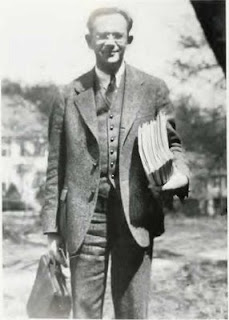Darwin's Daughter
by Faith Shearin
Stephen F. Austin State University Press, 2017
ISBN: 978-1-62288-164-2
96 pages
__________
Faith Shearin is the author of six books of poetry: Darwin's Daughter, The Owl Question (May Swenson Award), The Empty House, Moving the Piano, Telling the Bees, and Orpheus Turning (Dogfish Poetry Prize). Her work has been read aloud on The Writer's Almanac and included in American Life in Poetry. She has received awards from The Fine Arts Work Center in Provincetown, The Barbara Deming Memorial Fund, and the National Endowment for the Arts. Her work also appears in The Autumn House Anthology of Contemporary Poets and Good Poems, American Places. She lives with her husband and daughter in a cabin on top of a mountain in West Virginia.
__________
Review of Faith Shearin's Darwin's Daughter
The poems in Faith Shearin's Darwin's Daughter explore many variations of love and loss, time and memory, beauty and violence, creativity and imagination flowing and stifled, hope and despair--so many of the complexities that thread through our lives as humans. Her work is infused with an irresistible sense of awe, honesty, kindness, and reverence.
Many of the poems deal with unpleasant but unavoidable aspects of life: illness, aging, death, monsters, wars, and disasters. In the opening poem, "Driving Home," the narrator comes across a deer "dying, but not yet dead." She speaks of the horrific choices we are sometimes forced to make as humans: "I could not / swerve, but had to drive over...legs that had just // rushed through / trees, beyond farmhouses, // hooves thumping." The idea of transitions or changing from one state of being to another, as suggested in the phrase "dying, but not yet dead," is repeated throughout this collection. The poems often take place in these in-between places and/or spaces, the edges of things. In "Snakebite" the family puppy is about to die from a snakebite. The poem even takes place at dusk (the transition from light to dark), and the accident happens when a door is opened, an image of transition from inside to outside. But the poet chooses not to show us the actual moment of death. The narrator says, "and I have gone / back, many times, to try and close it [the door]." This sadness and the longing to change the inevitable are also conveyed in speaking of the puppy's innocence: "She was a puppy, so she suspected nothing." This theme of innocence and untimely death continues in the poem "Death Child With Flowers," about a "nineteenth century mourning portrait" of a child's funeral layout "in a formal bedroom beneath / wreaths of flowers." The narrator chooses to concentrate on images of growth and beauty:
...it is as if the tiny body is becoming a garden
of White Irises and Baby's Breath, as if grief
has erupted in blossoms and climbed the headboard,
as if the flowers in a nearby meadow
blew through a window and took root in this
mattress which is as soft as earth...
The poem ends with a haunting image: "now the child is becoming the flowers / which are also temporary: cut, // unable to drink, their petals tender." Again, we are taken inside a moment of transformation, and reminded of how fleeting life is.
Regret about the transitory nature of life is repeated in the poem, "In This Photo of My Father," which speaks of a time when her father was alive, captured as it were, not only in the moment of this poem, but in the photograph. She says, "It is...the month before / he won his last supreme court case," touching on this idea of transitions and of looking ahead to the future. The poem ends with a beautiful image of transformation and of boundaries, the edges of things:
Sometimes, in his office,
a breeze moved through
the room, and we were
the island, and we were the sea.
The idea of living on an island in the sea is explored earlier in the poem with the lines: "my teacher / explained the difference between submerging / / and emerging coastlines." This image of edges, doorways, or thresholds repeats in the poem titled "Liminal States:"
It is dusk or dawn and we have just awakened
from a deep sleep. I speak of the edges
between water and land, the place where
the forest gives way to a meadow, of the day
before my great grandfather died...
The poem is filled with these in-between places, moving back and forth in time, stopped in the sliver of a second before something momentous happens: "This is just before the baby is born...my mother / is in the waiting room but no one has told // her she has cancer; my father's car / is spinning, but he is still conscious."
Another poem containing family captured in a moment in time (a memory) is "Family Movies," which looks back into the past: "your grandmother walks through // the last years of her life in Florida," and then, with a stunning image, steps into the present (or the future, from the point-of-view of the movies):
...you step into the light, a hand
over your eyes, as if you can see us
out here, watching, in the uneaten cake
of the future.
In "He Ate Peaches" the narrator says of her grandfather: "He ate peaches that last summer in the cabin / by the river." She uses an exquisite image to describe the memory--a sister "slicing peaches in the kitchen: / soft, downy swellings gathered in a basket." The poem ends on a note of love and reverence:
...I still believe
I will find him bent over a bowl as bright
as June, his hands shaking as he lifts
the fruit to his lips, knowing it is almost gone.
That last line holds such power, suggesting that the grandfather knows the fruit is almost gone, as well as his life.
Another poem that explores the importance of memory, and photos that fix memories in place and time, is "My Grandmother, Swimming." The narrator describes her grandmother walking down the stair in her bathing suit, implying she's intending to slip into a swimming pool. Instead she says:
...For a moment she slips
into the photo I keep on my desk
where she stands under a tree at the edge
of dusk, her head on my grandfather's shoulder,
all her brothers still alive.
She goes on to describe her grandmother as living "alone in her house of memories," and ends the poem with a stunning image that suggests swimming, but implies so much more: "In this blue lane she moves slowly, not wanting to reach the end." This suggestion that she doesn't want to reach the end of her life echoes so beautifully the last line of "He Ate Peaches" in which the grandfather knows his life "is almost gone."
The title poem, "Darwin's Daughter," delves into many of the themes that thread throughout the collection. The Galapagos Islands are mentioned in the first line, mirroring an island mentioned in earlier poems, and the idea of isolation and of being on the edge, the border, of two things (land and water). The idea of isolation is mirrored in Darwin's grief over his daughter, Annie, who died at the age of 10. The poem states, "It is said / that he lost his faith when he lost / his daughter." The poem skips ahead to his later years when "he went walking / in the forest while his family sat in church," hinting he never regained his faith after the loss of his daughter. The poem goes on to speak about how Darwin "had a single // daguerreotype of his daughter in which she / did not smile," and ends with these haunting lines about how vital his memories of her remained:
...He was a scientist and he wrote
his memories of Annie, folded
them into a labeled box; he described how
she touched his hair, how she sat
in his study, comparing two editions
of the same book, word by word.
The center of the poem contains an essential idea that repeats throughout the book: "He believed that all life was related, descended // from a common ancestor."
Many poems in this collection hone in on our connections and relationships with fellow humans, as well as what I call our connection to the natural world, celebrating its beauty, wildness, mystery, and adaptability. In "Dressing the Kittens" she loves "the smell of their fur which was tinged / with the mystery of forests, sometimes / my father's cologne." In "Northwest Passage," she speaks of explorers' dreams of finding that "elusive passage // from Atlantic to Pacific." She describes it as "desire, / a river running through the imagination." The poem ends with these beautiful lines:
...I think of icebergs
as tall as night rising from a violent
black sea, and the eerie music
they make rubbing against one another,
screams and groans: a Siren song.
In "Bamboo Forest" she speaks of the wildness of the bamboo her mother planted: "At night / I could hear it growing: the music // of disappearances, of privacy / ripening." In "Apple Trees in Winter" she says, "I was intoxicated by the froth of their blossoms: / / as white as a swan's feathers, their beauty / too heavy for branches." She admires the "sturdiness and adaptability" of the "Radioactive Boars" who survived Japan's nuclear disaster, saying "I want to be more like them, / you understand, want to rise up / on unlikely hooves." The poem "Wild Animals" celebrates and envies the freedom of animals:
...Let the wild dogs rescue us
from our cardboard box and teach
us how to sniff: our teeth sharp,
our eyes luminous in the dark.
We'll remember how
to eat leaves, and freedom, and roots.
In "Escapes" she praises the animals in the zoo who figured out how to escape: "I want to be / the bobcat who leapt out of his // habitat--man-made wall, / man-made moat--to lie beside // a singing tree."
This theme of escaping connects to poems about various ways we humans are sometimes not able to escape our situations at times. In "Houdini's Escapes" she says, "Surely he would have known how // to get out of unhealthy relationships / and PTA meetings, how to // cancel a holiday with enemies." The poem ends with her wishing she "could ask him how he // did it because every escape requires / its own courage and dexterity; // every escape is also a show."
There is also a thread that runs through many of these poems exploring and celebrating imagination, creativity, voice, language, photography and visual art. In "Southern" she says, "It was the language I loved: / the way my great grandfather said the word / sassafras to amuse himself / and the aunties, surprised, / said I swan instead of I swear."In "Mary Shelley, Creating Frankenstein," she says, "Mary invented // a pale physician kneeling / beside a creature he had stitched together / from grief," mirroring Mary's creating the tale after all the deaths she experienced. "Frances Glessner Lee" describes a woman who "Loved miniatures: made tiny replicas of rooms / that captured her imagination, recreated / the stiff chairs, the oil paintings of angels, / a pair of wire-rimmed glasses on a bedside table."
Besides poems about family and ancestors that thread together a personal history of connection, this collection also contains poems about our larger human history and mythological figures that connects us all. "Lucy, Falling" tells the story of "three million years ago...our [tree-dwelling] ancestor: / falling through time." She speaks of "our miniature /ancestors" in "The Hobbits of Flores." In the imaginative "Eve, Growing Old," she begins with the idea of Eve depicted in paintings "at the edge of a blooming paradise" and ends with the image of "Her hair turned white, then fell out," and the idea that, being the first woman, she is "unmothered:" "she had no picture of her grandmother / on the bedside table to comfort her, / no ancestors waiting for her in myth, / or memory."
Many poems are celebrations of famous people who made various types of discoveries (Darwin, Alexander Fleming, Henry Hudson, Lewis and Clark), well-known authors and their imaginative works (Emily Dickinson, Thomas Lux, Sylvia Plath, Ann Sexton, Mary Shelley, Virginia Woolf), famous entertainers (Elvis, Houdini, Marilyn Monroe), of epic adventurers and mythological figures (Blackbeard, Guinevere and King Arthur, Penelope and Odysseus), and of historical tragedies such as the 1911 Triangle Shirtwaist Factory Fire, the sinking of The Titanic, wars, nuclear disasters, and The End of the World.
Many of the poems contain emotional intensity, such as in "Penelope's Bed," where the poet delves into imagining what it was like for Penelope to wait twenty years for her husband Odysseus to return home from adventures, including times he "slept with women in caves" while she "was expected to be faithful: weaving // and unweaving her future." The poem ends with a powerful sense of yearning conveyed in the poet's image of Penelope "rolling over // in the dappled light, of her hand, / reaching." Time passing, another motif explored in this collection, is gorgeously depicted in the poem's beginning image:
Her headboard was also an olive tree: alive
in the bedroom, at the center of the house,
where it thickened and grew. The weather
of her marriage was recorded in its rings--
days of rain, days of drought,
nights when we she alone, waiting
Another poem that explores this idea of waiting and of time passing is "My Mother's Van," which describes the narrator's mother waiting "outside the houses / where we failed to get better at piano lessons," "made digestive sounds / with trumpets, danced badly at recitals." She expresses a sense of regret about all the waiting her mother did for her and her sisters, and all the things her mother might have wanted to do with her van:
She meant to go places
in it: camp in its back seat
and cook on its stove while
painting the coast of Nova Scotia,
or capturing the cold beauty of the Blue Ridge
mountains at dawn...
The poem ends wistfully, with the narrator expressing a sense of regret, yearning for a way to somehow change the past, at the same time she knows its impossibility:
I look out a window and believe I see it,
see her, waiting for me beside a curb,
under a tree, and I think I could open the door,
clear off a seat, look at the drawing in her lap,
which she began, but never seemed to finish.
This image of opening a door carries through many of the poems, a symbol of possibility. Another image of possibility that repeats are of windows being open. In "One Sometimes Finds What One Is Not Looking For," Fleming returns to his lab after a vacation, to find "an open window / blew mold into his petri dishes." The poem continues:
...One sometimes finds
what one is not looking for Fleming said
after he named the mold penicillin...
The above lines touch on the sometimes randomness of life and its accidental discoveries. The poem ends with whimsy and reverence: "I praise / that open window, his mess, the mold / drifting in."
I want to end with talking about the poem "The End of the War," one of my favorite poems in the collection. It's short, so I'll include it in its entirety:
The End of the War
In train stations soldiers arrive, their heads
leaned out windows, hands reaching
through smoke for the lives they left behind.
Men in uniform kiss women in dresses
on city streets, lean them back so they are like
stalks of flowers
remembering the wind; in my grandparents' album
one uncle carries his girlfriend through a garden,
leaves trembling, her skirt alive.
What a sense of breathtaking beauty, hope and wonder is expressed in the images of the women like "stalks of flowers // remembering the wind," and the girlfriend being carried through a garden "leaves trembling, her skirt alive."
Faith Shearin's Darwin's Daughter shimmers with poems engaging fully with life, paying deep attention to all its duality--its mystery and beauty alongside its disappointments and losses. These are poems you'll want to read more than once. They pull you in, resonate deep within you through gorgeous, layered imagery and genuine emotion, reminding us of our strength and vulnerability, and our complex connections to each other and the natural world.
__________
Karen George retired from computer programming to write full-time. She lives in Florence, Kentucky, and enjoys photography and traveling to gardens, museums, historic river towns, mountains, and Europe. She is author of two poetry collections from Dos Madres Press: Swim Your Way Back (2014), and A Map and One Year (2018), and five chapbooks, most recently The Fire Circle (Blue Lyra Press, 2016) and the collaborative Frame and Mount the Sky (Finishing Line Press, 2017). You can find her work in The Ekphrastic Review, Sliver of Stone, Heron Tree, and America. She holds an MFA from Spalding University, and is co-founder and fiction editor of the journal, Waypoints. Visit her website: http://karenlgeorge.snack.ws/.



























